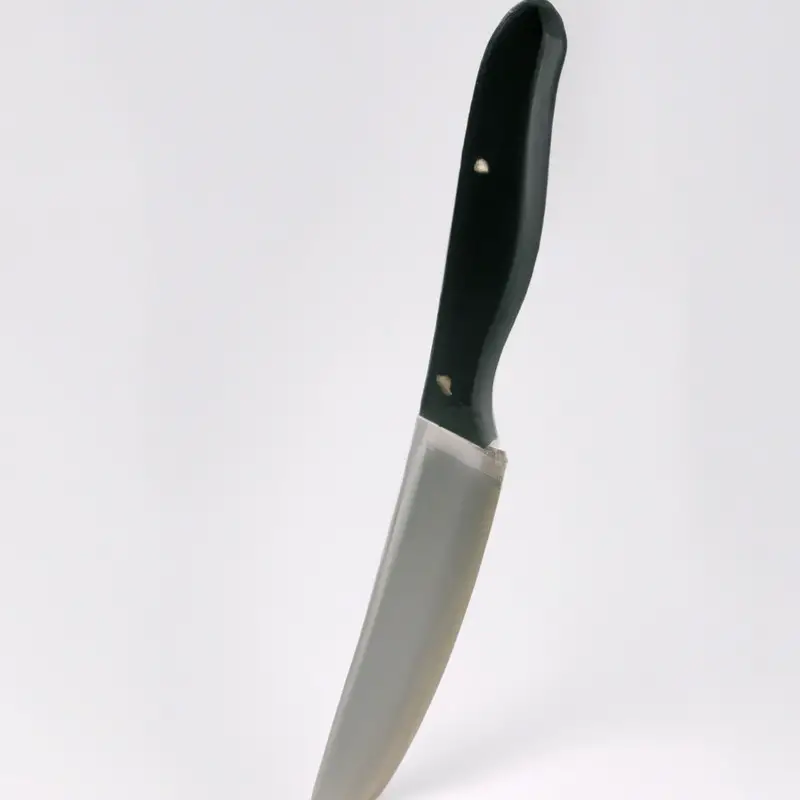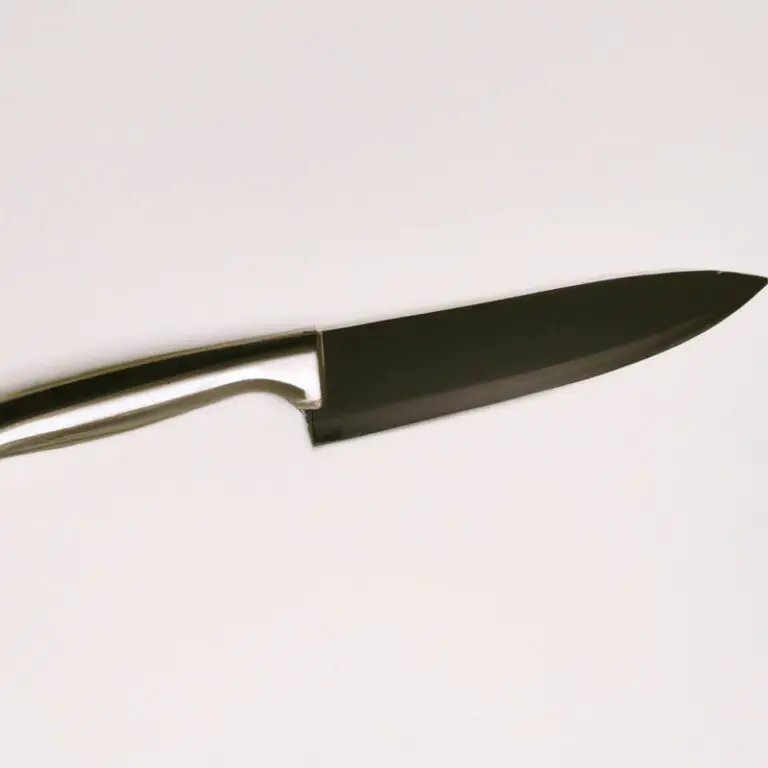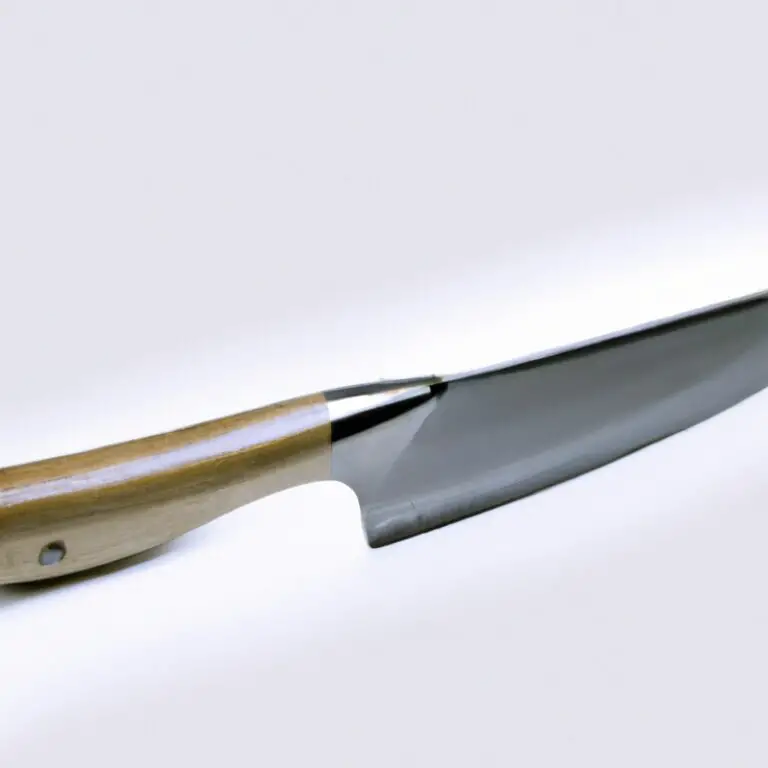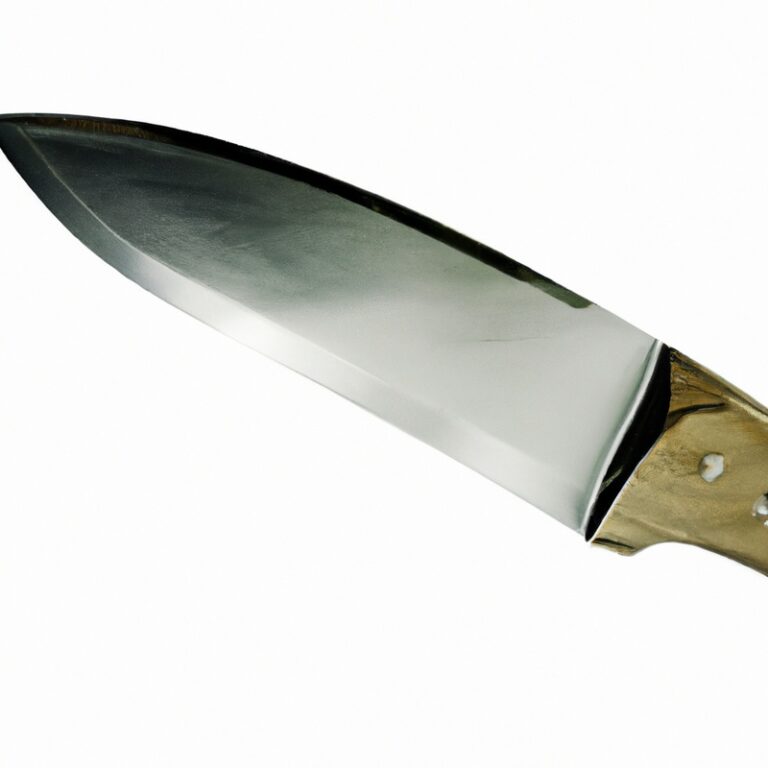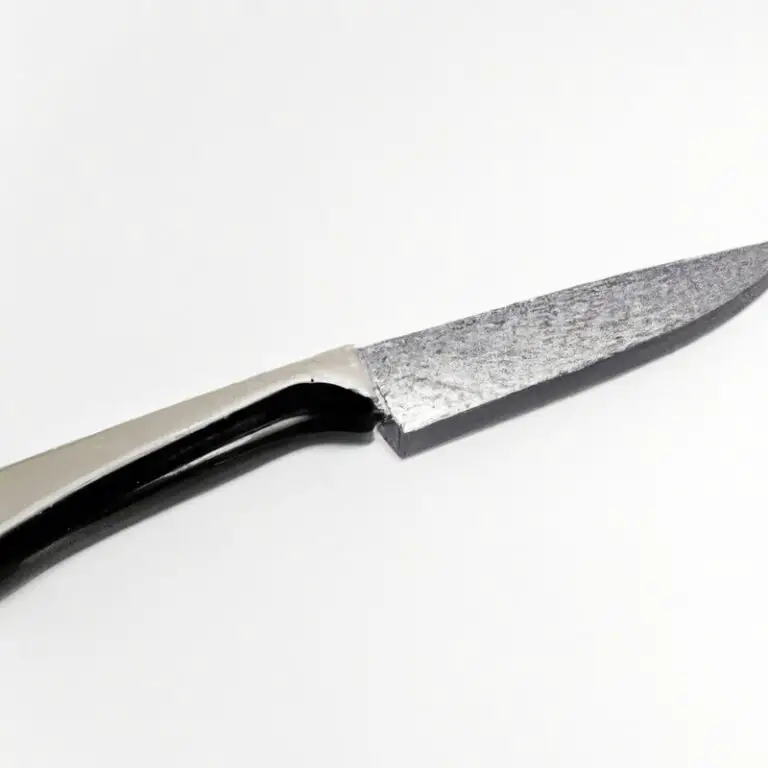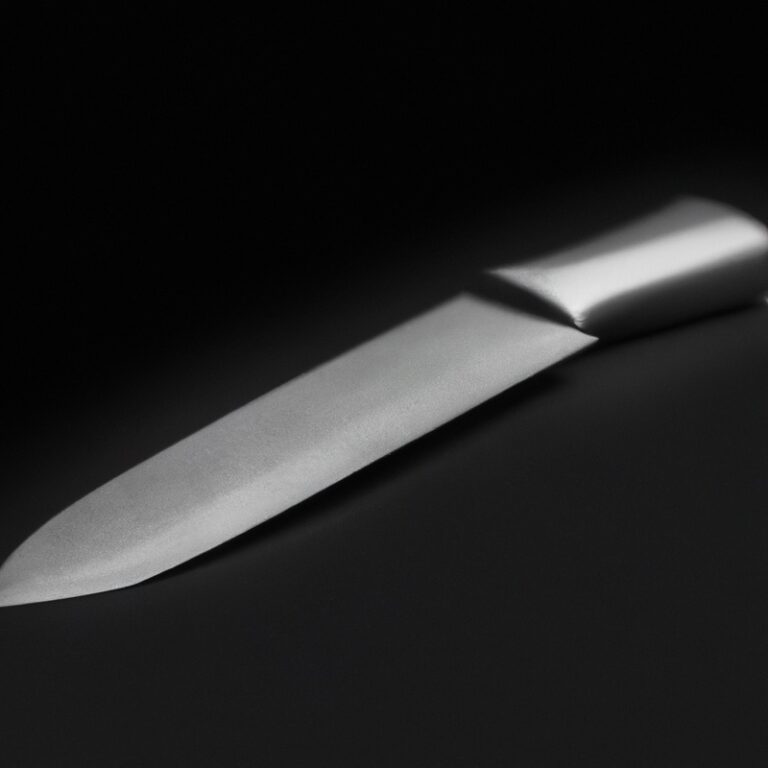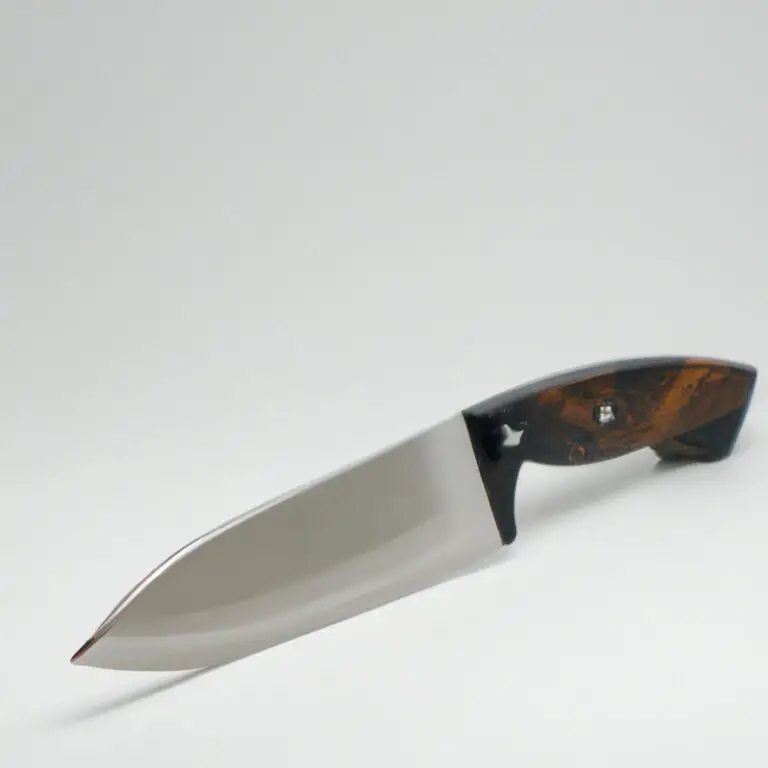What Is The Role Of Chromium In Stainless Steel Knives?
Key Takeaways:
- Chromium is a vital element in stainless steel knives, as it enhances their corrosion resistance.
- The minimum amount of chromium required for a stainless steel knife is around 12%.
- Chromium also contributes to the strength and hardness of the blade, improving its overall performance.
- Proper maintenance and cleaning of stainless steel knives are necessary to prevent corrosion caused by chromium depletion.
Hey there! Ever wondered why stainless steel knives are so effective at fighting off rust and maintaining their sharpness? Well, it all comes down to one vital element: chromium.
Chromium is not only responsible for giving stainless steel its shiny look, but it also plays a crucial role in enhancing the performance and longevity of your favorite kitchen companion.
From boosting corrosion resistance to increasing strength and durability, chromium is the secret ingredient that makes stainless steel knives a cut above the rest. So, let’s dive deeper into the world of chromium and uncover its fascinating role in creating the perfect blades that withstand the test of time.
| Role of Chromium in Stainless Steel Knives |
|---|
| Chromium Content |
| Effects on Stainless Steel Knives |
| Pros |
| Cons |
| References |
| Additional Notes |
| Chromium is an essential element in stainless steel knives as it provides corrosion resistance and increases the durability of the blade. |
| The chromium content in stainless steel knives typically ranges from 12% to 20%. Higher chromium content results in improved corrosion resistance. |
| 1. Provides corrosion resistance, making the knives less prone to rusting 2. Enhances the durability and strength of the blade 3. Retains sharpness for a longer period of time |
| 1. High chromium content may lead to increased brittleness 2. Some people may have allergies or sensitivities to high chromium alloys |
| 1. Andersson, N. (2018). The Complete Guide to Knife and Tool Steels. F&W Media International Limited. 2. Stjernberg, G. (2012). Stainless Steels for Design Engineers. ASM International. 3. Michaud, M. (2010). Knife Steel FAQ. Retrieved from http://zknives.com/knfstl.shtml |
| – Chromium also plays a role in preventing staining and maintaining the appearance of the knife. – Other alloying elements, such as carbon, molybdenum, and vanadium, are often present in stainless steel knives to further enhance their properties. |
What is chromium?
Explanation of chromium’s physical properties
Chromium, a chemical element found in the Earth’s crust, exhibits several notable physical properties.
Firstly, it is a hard metal that provides strength and durability to stainless steel knives.
Secondly, chromium has excellent resistance to corrosion, making it ideal for kitchen tools.
Additionally, it has a high melting point, which allows knives to withstand extreme temperatures.
Furthermore, chromium forms a protective oxide layer on the surface of the steel, preventing rust and stains.
These physical properties make chromium a crucial ingredient in the production of stainless steel knives.
Discussion on the abundance of chromium in the Earth’s crust
Chromium is a chemical element that is abundantly found in the Earth’s crust.
It is actually the 21st most abundant element in the crust.
It is commonly found in various minerals, such as chromite ore.
The presence of chromium in the Earth’s crust makes it accessible for extraction and utilization in various industries, including the production of stainless steel.
The abundance of chromium in the Earth’s crust is significant as it allows for the production of stainless steel, a material known for its resistance to corrosion and durability.
This makes stainless steel knives a popular choice for many individuals.
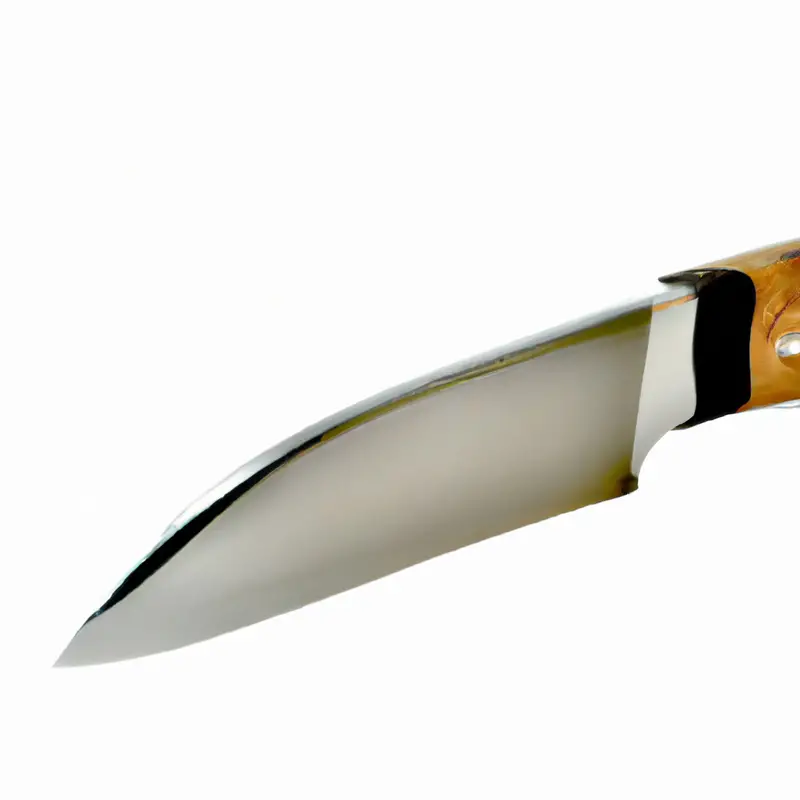
Role of chromium in stainless steel knives
Enhancing corrosion resistance
Chromium plays a vital role in enhancing corrosion resistance in stainless steel knives.
It forms a protective oxide layer on the surface of the knife, which acts as a barrier against rust and corrosion.
This oxide layer prevents moisture and oxygen from reaching the underlying metal, thus minimizing the chances of corrosion.
Stainless steel knives with a higher chromium content are more resistant to rust and stains, making them ideal for kitchen and outdoor use.
By incorporating chromium into the steel composition, knife manufacturers can ensure long-lasting corrosion resistance for their products.
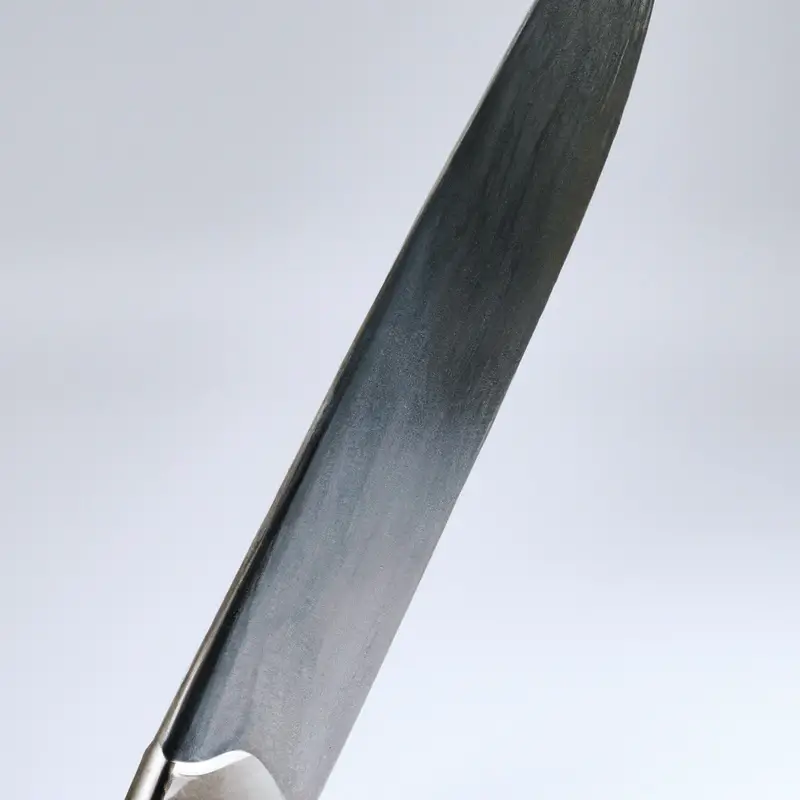
Increasing strength and durability
Chromium plays a significant role in increasing the strength and durability of stainless steel knives. It forms carbides with carbon, which helps in enhancing the hardness and wear resistance of the blade.
Additionally, chromium aids in preventing the formation of martensite, a brittle phase that can make the steel prone to fractures.
By increasing the chromium content in stainless steel, knife manufacturers can produce blades that are tough, corrosion-resistant, and able to retain their sharpness for a longer time.
Forming a protective oxide layer
Chromium plays a crucial role in the formation of a protective oxide layer on stainless steel knives.
This layer, also known as chromium oxide, acts as a shield against corrosion and rust.
When chromium combines with oxygen in the atmosphere, it forms a thin, invisible layer that prevents the underlying steel from being exposed to moisture and other corrosive elements.
This layer not only enhances the knife’s durability but also helps maintain its appearance over time.
So, having a higher chromium content in your knife’s blade ensures better protection against corrosion.
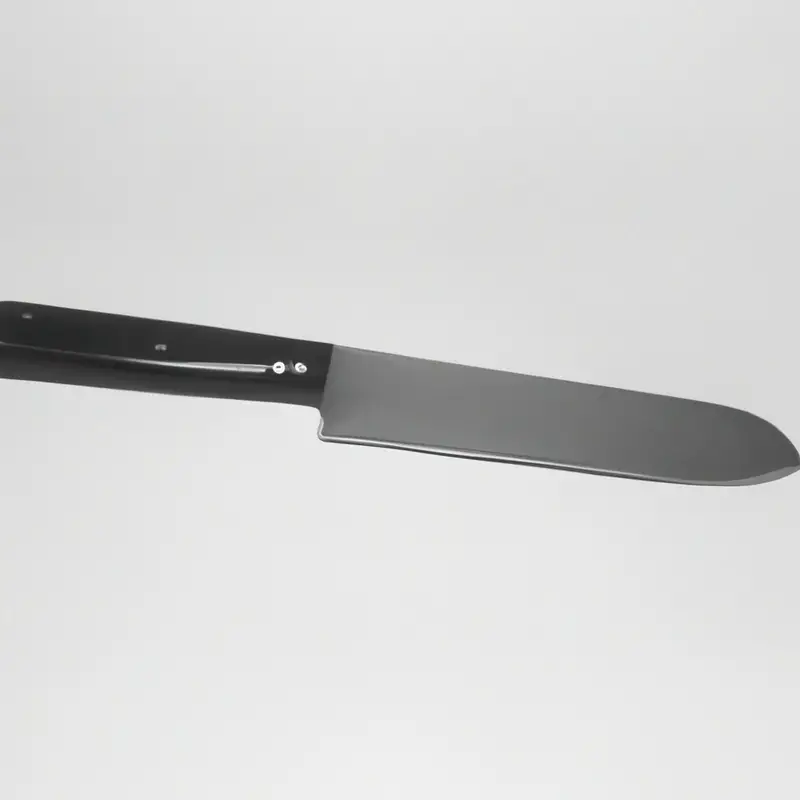
Chromium content in stainless steel knives
Different grades of stainless steel and their chromium percentages
Different grades of stainless steel contain varying percentages of chromium, which is a key component for providing stainless steel knives with their corrosion resistance.
The percentage of chromium in stainless steel ranges from around 10% to 30%.
Higher chromium content generally results in better corrosion resistance and durability.
For example, common stainless steel grades like 304 and 316 have approximately 18% and 16-18% chromium, respectively.
These percentages play a crucial role in determining the overall quality and performance of stainless steel knives.
Importance of a higher chromium content in knife blades
A higher chromium content in knife blades is important for several reasons.
- It enhances the corrosion resistance of the blade, protecting it from rust and stains.
- Chromium also increases the strength and durability of the knife, making it more resistant to wear and tear.
- Additionally, a higher chromium content helps in forming a protective oxide layer on the surface of the blade, further enhancing its resistance to corrosion.
Overall, a higher chromium content in knife blades ensures that the blade remains sharp, clean, and durable over time.
Other elements in stainless steel knives
Carbon and its impact on hardness
Carbon plays a significant role in determining the hardness of stainless steel knives.
When carbon is added to the steel composition, it forms carbides, which increase the overall hardness of the blade.
The higher the carbon content, the harder the knife becomes.
However, too much carbon can also make the knife brittle and prone to breakage.
Knife manufacturers carefully balance the carbon content to achieve the ideal combination of hardness and toughness in their blades.
Carbon is a key element in producing high-quality and durable stainless steel knives.
Molybdenum and its contribution to pitting resistance
Molybdenum is an important element in stainless steel knives as it significantly enhances pitting resistance. Pitting is a form of localized corrosion that creates small holes or pits on the surface of the knife.
By incorporating molybdenum into the steel composition, the knife becomes more resistant to this type of corrosion.
Molybdenum helps to form a protective oxide layer on the surface, which prevents the stainless steel from deteriorating due to exposure to moisture or harsh environments. As a result, knives with higher molybdenum content offer better durability and longevity, especially in challenging conditions.
Maintenance and care for chromium stainless steel knives
Proper cleaning and drying techniques
Proper cleaning and drying techniques are essential to maintain the quality of your chromium stainless steel knives. Here are a few tips to help you keep your knives in top condition:
- Hand-wash your knives: Avoid using the dishwasher, as the harsh detergents and high temperatures can damage the blades. Instead, wash them gently by hand with warm, soapy water.
- Use a non-abrasive sponge: Scrubbing your knives with abrasive materials can scratch the surface and compromise their integrity. Use a soft sponge or cloth to remove any food particles or stains.
- Dry immediately after washing: Chromium stainless steel is prone to water spots and stains, so it’s crucial to dry your knives thoroughly after washing. Use a clean towel to dry them right away, paying special attention to the blade and handle.
- Store properly: Avoid leaving your knives in the sink or damp areas, as moisture can lead to rust. Instead, store them in a knife block, magnetic strip, or a protective sleeve to keep them dry and protected.
Prevention of rust and stains
To prevent rust and stains on chromium stainless steel knives, there are a few simple steps you can take.
First, always clean and dry your knife thoroughly after each use.
This helps to remove any moisture that could potentially lead to rust.
Second, avoid leaving your knife in a damp environment or in contact with water for extended periods of time.
Third, store your knife in a dry place, ideally in a knife block or sheath to protect it from humidity.
Finally, consider applying a thin layer of mineral oil or food-grade oil to the blade to create a protective barrier against moisture.
Following these steps will help preserve the appearance and performance of your chromium stainless steel knives.
Final Verdict
Chromium plays a crucial role in the performance and longevity of stainless steel knives.
Its presence enhances corrosion resistance, increases strength and durability, and forms a protective oxide layer.
Different grades of stainless steel contain varying amounts of chromium, with a higher percentage ensuring better performance.
Additionally, carbon affects hardness, while elements like molybdenum contribute to pitting resistance.
To maintain and care for chromium stainless steel knives, proper cleaning and drying techniques should be followed, and measures should be taken to prevent rust and stains.
By understanding the role of chromium and practicing proper maintenance, knife enthusiasts can ensure the longevity and optimal performance of their stainless steel knives.

